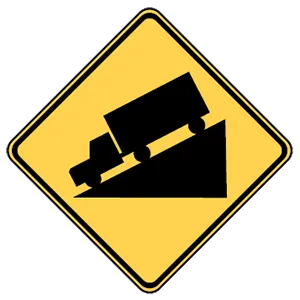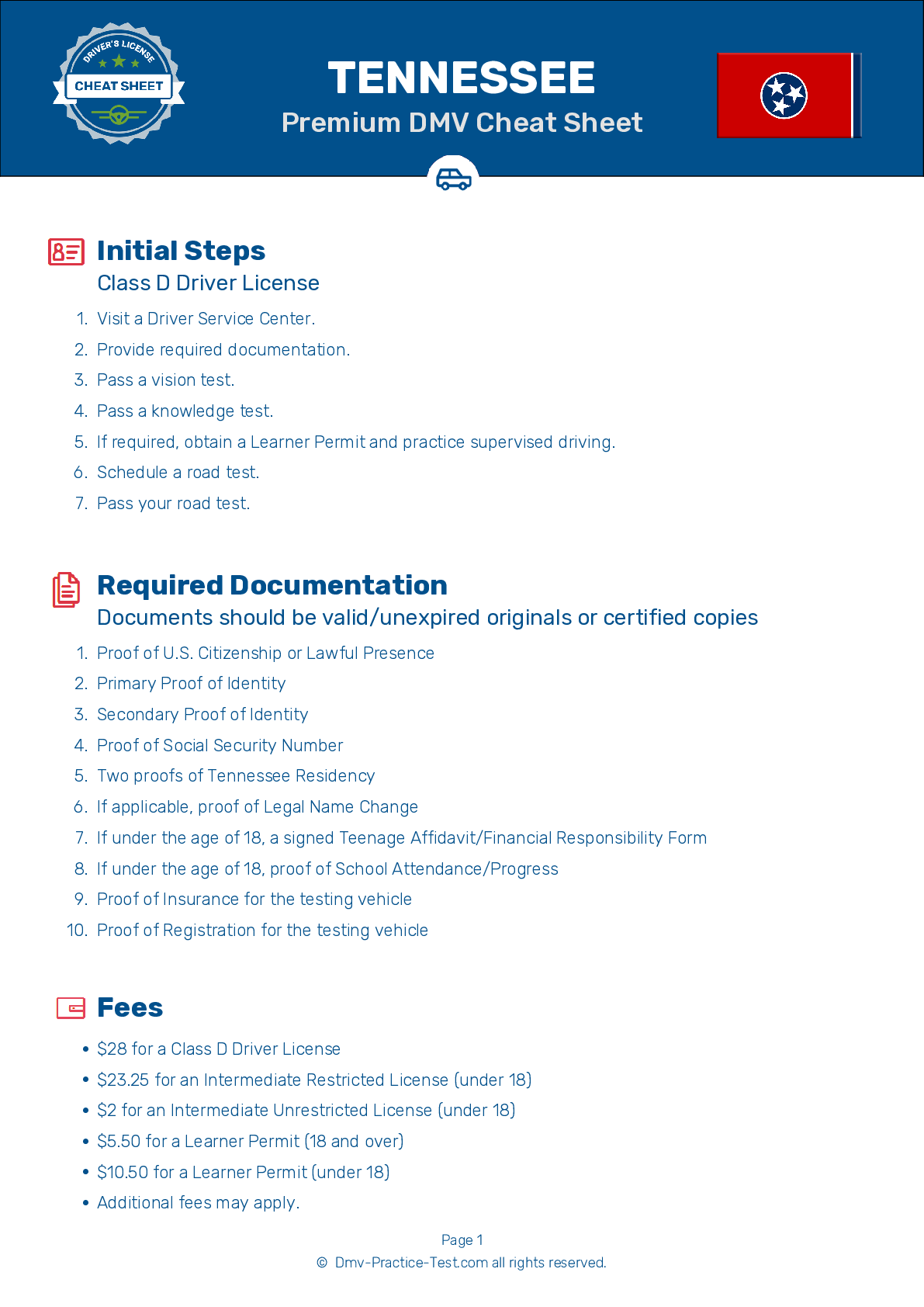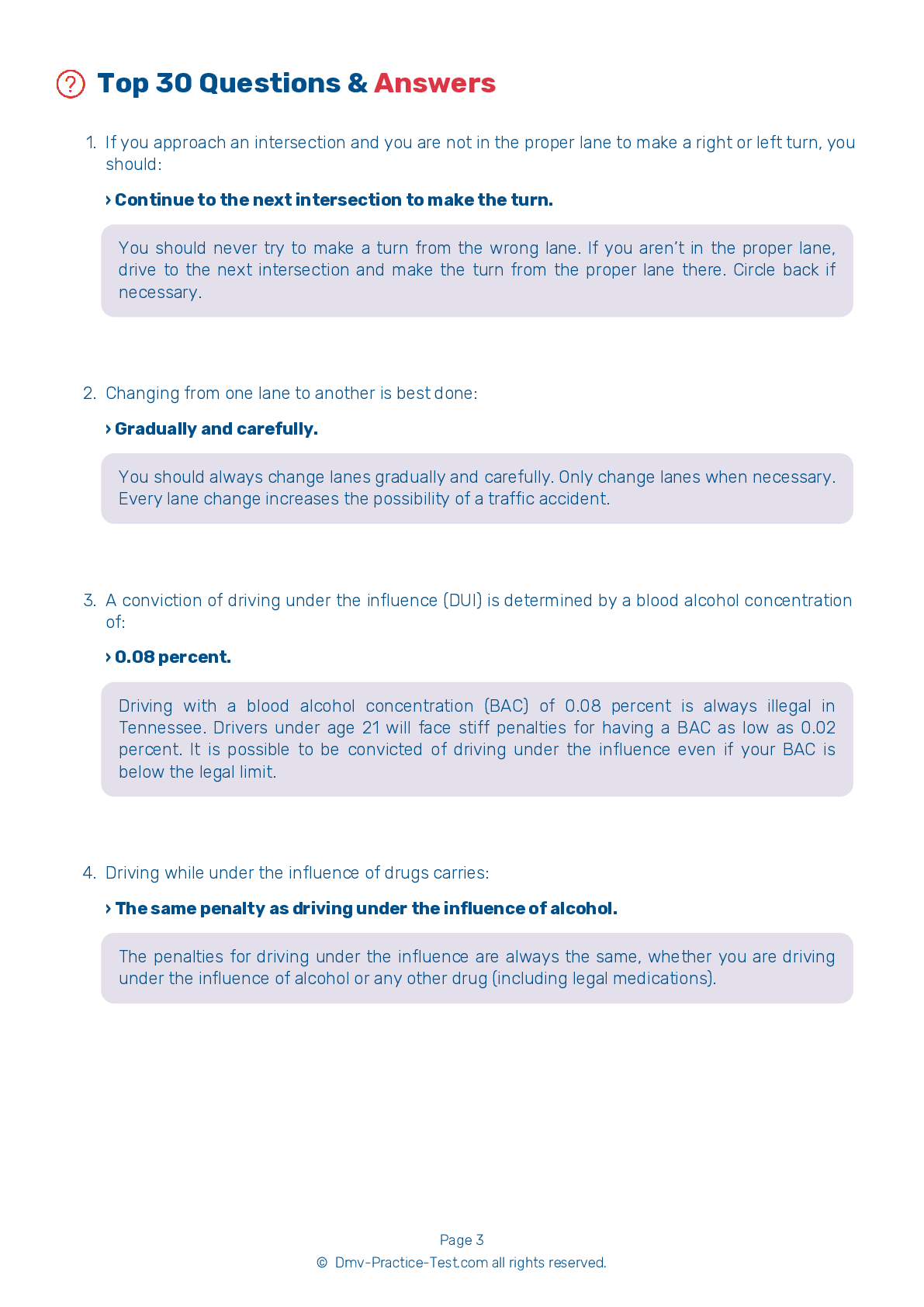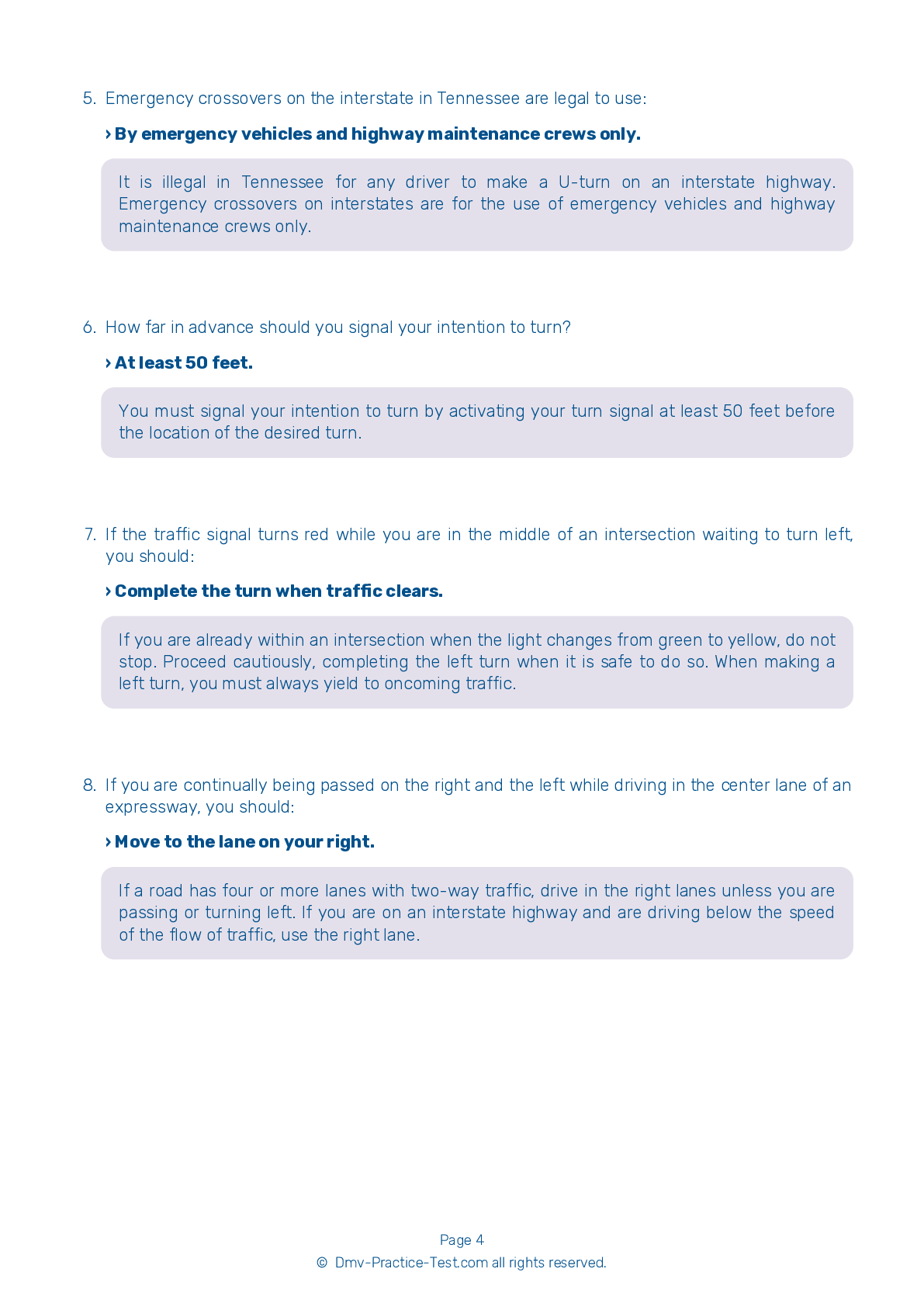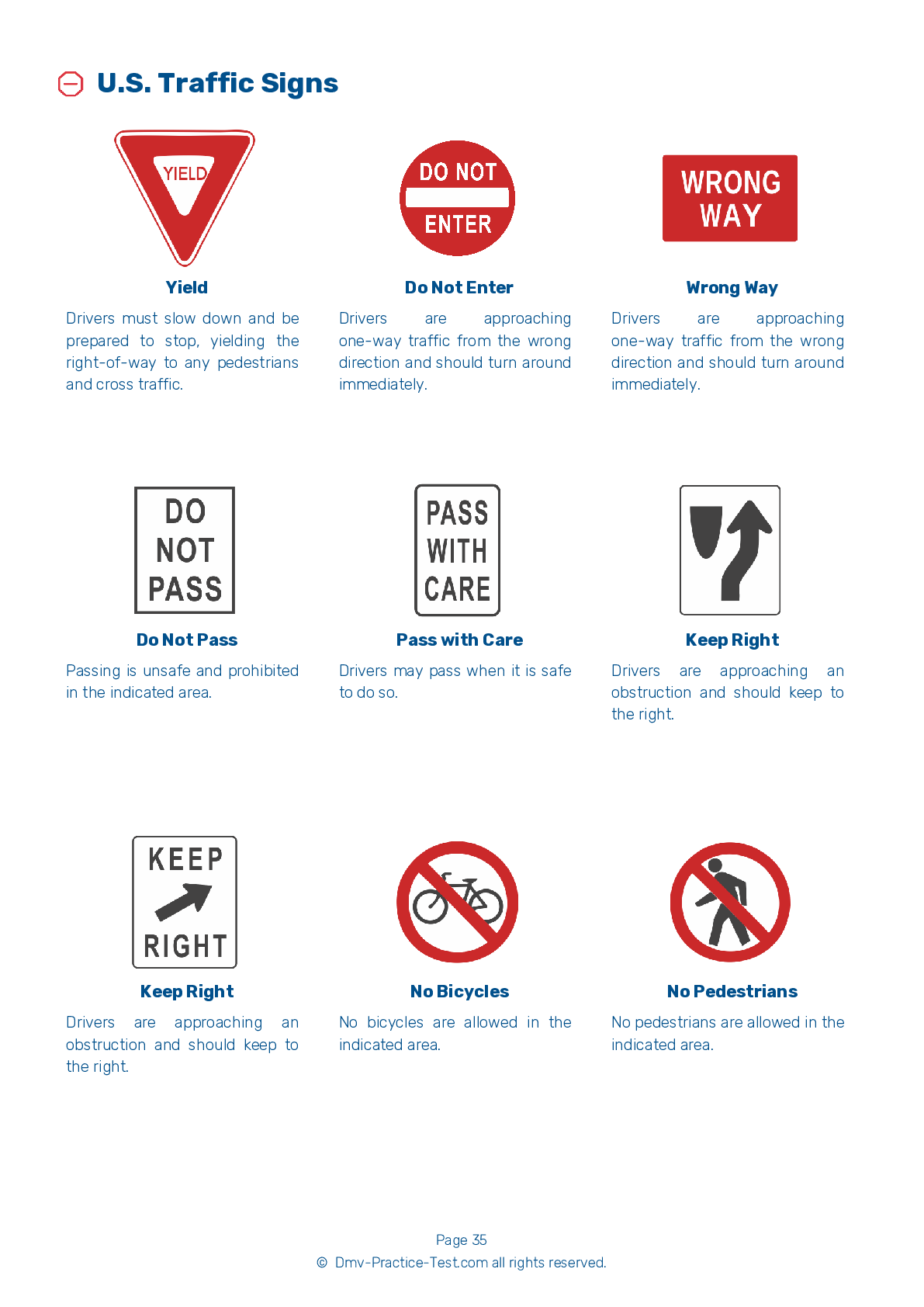FREE Tennessee DMV Practice Test #1
The Tennessee DMV practise exams for January 2025 have been updated. It includes questions based on the most important traffic signals and laws for 2025 from the Tennessee Driver Handbook. To study for the DMV driving permit test and driver's licence exam, use actual questions that are very similar (often identical!) to the DMV driving permit test and driver's licence exam.
Each question on the practise exam has a tip and explanation to help you recall the ideas. Questions about traffic rules, traffic signs, and driving statutes, as well as knowledge from the Driver Handbook, will be included in the written portion of the official Tennessee DMV test.
You must properly answer 24 of the 30 questions to receive a passing mark. Use the Tennessee Department of Motor Vehicles' practise exam to help you prepare for your instruction permit or driver's licence.
The DMV exam is offered in a variety of languages.
Using any form of testing help will result in an automatic fail, and the DMV may take further action against your driver's licence, so avoid it.
1 . A broken yellow line between two lanes of traffic means:
Dashed yellow lines separate single lanes of traffic moving in opposite directions. Passing is allowed when there is no oncoming traffic in the passing lane.
2 . To avoid hydroplaning while driving in rainy conditions, you should:
When driving too quickly in wet conditions, your tires may lose all contact with the road surface. Loss of traction will cause the vehicle to ride on top of the water, which is called "hydroplaning." The best way to prevent this from happening is to drive more slowly in rainy or wet conditions than you would when driving during ideal weather conditions.
3 . This road sign means:
